The Best Breeds for Hunting Hogs
We’ll take a look at how those breeds perform against hogs, what they do best, and what they lack.
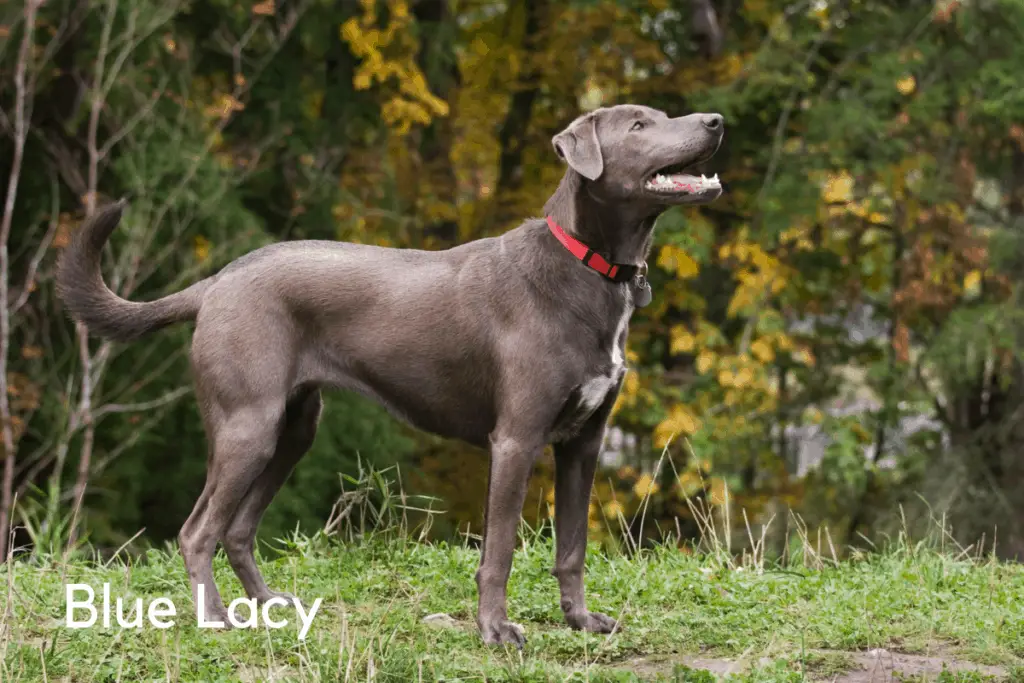
Blue Lacys are among the most famous breeds in the hog hunting world. Simply because they were specifically bred for this task in the 1850s in Texas. Therefore, they have the necessary attitude and skills written in their genes. Lacys are well known for their superior agility, speed, and stamina. That’s why they serve best as tracking dogs rather than catch dogs.
The only thing I don’t like about them is their relatively hot nose. Don’t get me wrong; they can track hog trails. But they won’t catch older trails as well as a hound.
Nevertheless, when they successfully corner a hog, you’ll watch an unmatched act of courage and grit. They’ll easily contain the sneakiest hogs and bay loudly until you arrive.
Moreover, their intelligence makes them learn notably fast. As a result, training them is a lot easier than other hunting breeds.
As puppies, they have exceptionally high energy. That’s why they won’t be suitable as house pets, especially if you have young kids.
Hunting style: Tracking dogsTemperament: Active and IntelligentHeight: 17-25 inchesWeight: 25 to 50 pounds
Pros:
Cons:
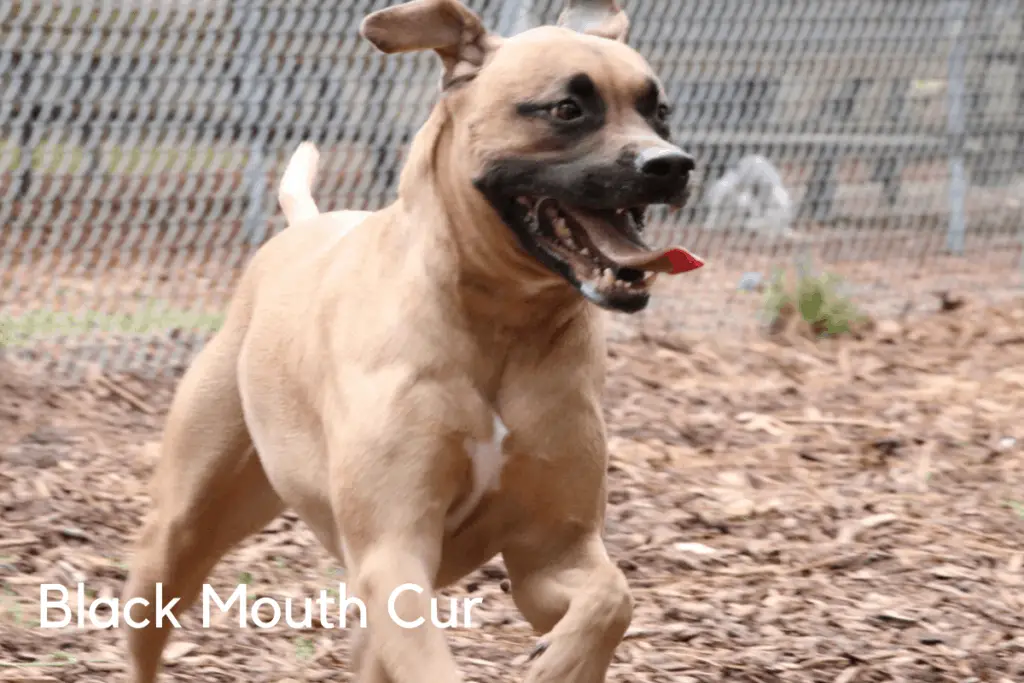
Simply put, Black Mouth Curs are one of the most versatile breeds in hog hunting. First of all, they have a well-muscled build that makes them a reliable match against the strongest hogs.
Furthermore, they have a strong nose with which they can trail and track semi-old trails. Therefore, we can agree that a pack of Black Mouth Curs will track and catch hogs on their own.
Personally, I think that they look absolutely cool with the black, square-shaped muzzle, and the brown coat. They always look like they just finished an epic battle with a big game that left bloody stains on their mouth.
Inside the house, they also serve as loyal pets. But it’s important to give them the required physical exercise, or else they’ll show signs of aggression. They can also be used for other purposes like protection and herding.
If you have young kids in your household, don’t leave them unattended with a Black Mouth cur as they like to play quite rough.
Hunting style: Catch and tracking dogsTemperament: Fearless and trustingHeight: 16 to 25 inchesWeight: 40 to 95 pounds
Pros:
Cons:

Needless to say, American Bulldogs are among the classic catch breeds currently in the US. Thanks to their extremely strong builds, no hogs wouldn’t stand a chance against them.
It’s believed that they were bred from the English bulldog around the 17th century. Farmers and ranchers widely used them for protection and herding. However, they thrived exceptionally well in the southern states as they were super helpful with feral hogs.
American Bulldogs are characterized by their strong locking jaws. Their lower jaw is usually longer than the upper, a bite known as a reverse scissor bite. This makes their grip even tighter.
Despite their bulky appearance, they show surprising speed in the hunt. The speed alongside their aggressiveness won’t allow any hog to outrun them.
The sole tradeoff lies in their noses. As you might already know, they don’t track the scent as well as other hunting breeds.
Give them the necessary exercise and they’ll also be great as pets. Don’t let their hunting style fool you, though. They show exceptional affection for all family members, especially kids.
Hunting style: Catch dogsTemperament: Loyal and confidentHeight: 22-25 inchesWeight: 75-100 pounds
Pros:
Cons:
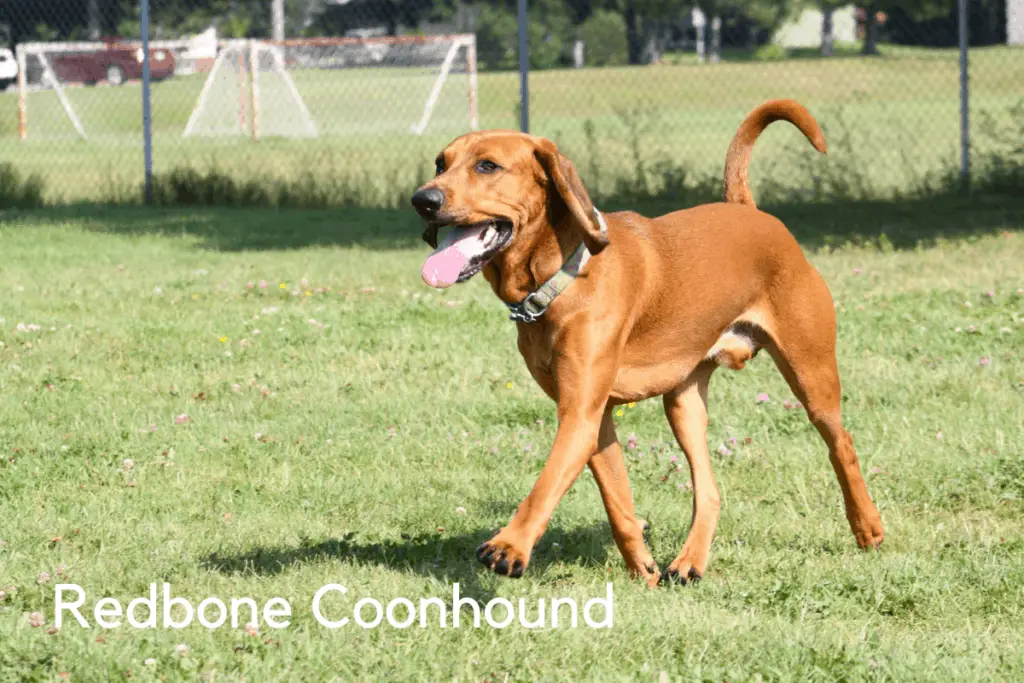
Redbones were initially bred to hunt raccoons in the 19th century. They had an amazing performance in tracking thanks to their unmatched cold noses. That’s why they gained wide popularity in hunting big game.
My most favorite thing about Redbones is their baying. When they successfully corner a hog, they’ll sound a distinctive bay to let you know about their victory.
It’s important to train your Redbone on following your orders. Otherwise, they’ll prefer to follow their nose and leave you behind.
If you’re looking for a pet to live inside, don’t consider Redbones. They’re extremely energetic with a high urge to use their noses in tracking, which won’t be available in apartments.
It’s also important to note that they have a quite delayed mental maturation. Puppies reach full size at about 1 year. But it takes another year and a half for their minds to develop completely.
Within this period, they’ll tend to play rough, which is another reason that prevents having them as pets.
Hunting style: Mainly tracking dogsTemperament: Amiable and eager to pleaseHeight: 22-27 inchesWeight: 45-70 pounds
Pros:
Cons:

Walkers are mainly known for their speed. That’s why it’s highly common to see them in field trials.
Despite being Coonhounds, Walkers don’t have a cold nose. In fact, they often ignore older scents to go after the fresher ones. This may present a problem if you’re going after a distant, sneaky hog.
However, if they successfully spotted a hog, they’ll tirelessly follow it until it’s cornered, no matter how long it takes. This happens thanks to their exceptional endurance and perseverance.
Just like Redbones, Walkers bay uniquely when they corner a prey. This gets especially helpful if you’re hunting at night or if the dog gets too far.
In a house, Walkers would be highly devoted to your family and kids. But they wouldn’t be as friendly toward other pets, especially the smaller ones. Moreover, their droopy ears can easily develop an infection unless they’re properly cleaned.
Hunting style: Tracking dogs Temperament: highly enduring and even-tempered Height: 22-27 inches Weight: 50-70 pounds
Pros:
Cons:
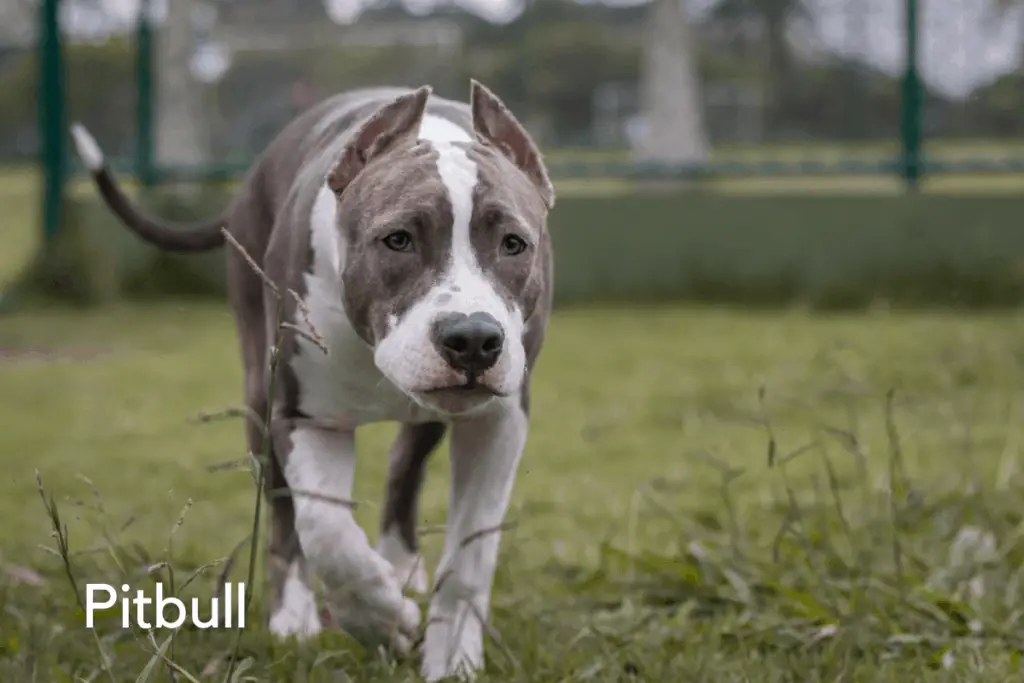
I couldn’t include Bulldogs without mentioning their similarly-looking cousins, the Pit Bulls. In fact, Pit Bulls were bred from Bulldogs and Terriers to combine strength and agility respectively.
These characteristics made Pit Bulls suitable for harsh blood sports like bull-baiting, bear-baiting, and dog fights. After these sports were banned in most countries, Pit Bulls were consequently used for hunting big game such as feral hogs.
When Pit Bulls catch a hog, there’s no way it could run. That’s because of their super-strong jaws and wide skulls. They also tend to shake their head vigorously to tear the prey’s flesh even further.
Aside from their physical superiorities, Pit Bulls show extreme obedience if properly trained. This gives a seamless and effective hunting experience.
Although they’re known for aggressive behavior, Pit Bulls are affectionate toward their owners by nature.
However, some people don’t spend enough time in their training and socialization, or they don’t do it with sufficient firmness. In this case, Pit Bulls might hurt strangers and even their owners.
Hunting style: Catch dogsTemperament: Obedient and fierceHeight: 18-24 inchesWeight: 25-60 pounds
Pros:
Cons:
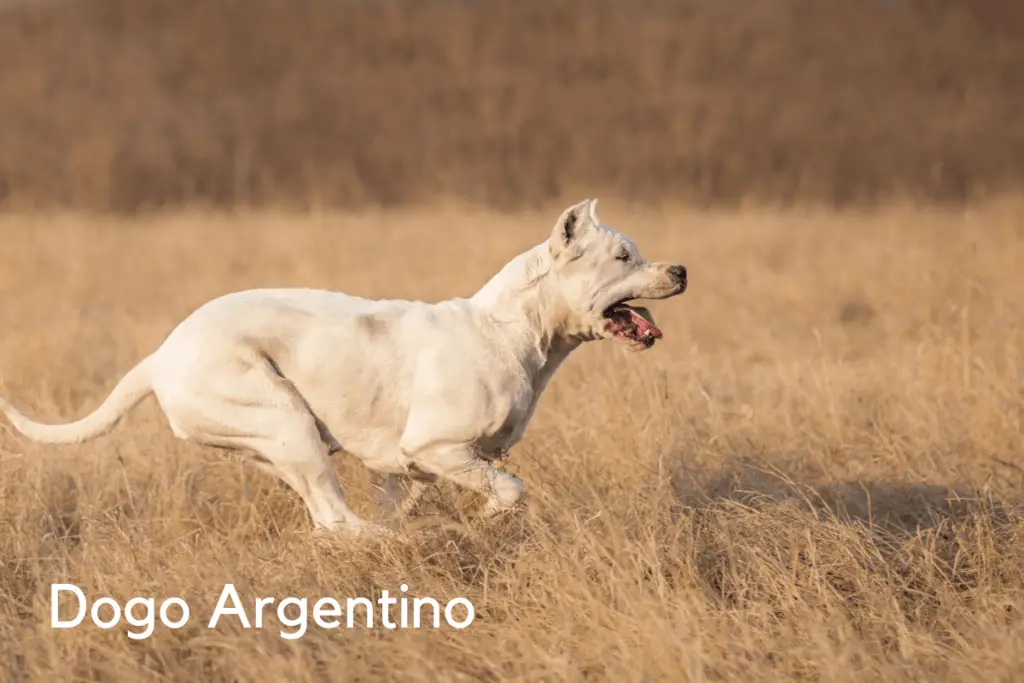
Larger and more powerful than Pit Bulls, Dogos are my favorite catch dogs. As their name implies, they were initially bred in Argentina to hunt wild hogs living in its forests.
Thanks to their powerful build, they can take down almost any hog individually. However, it’s better to pair them with any tracking dog to compensate for their relatively weak nose.
Their bite is quite similar to the Pit Pulls. They tend to pierce their molars deep inside the prey, making it impossible to fight back.
Unlike Pit Bulls, Dogos were selectively bred for hunting rather than fighting. That’s why you can always see them as loyal and friendly pets.
Nevertheless, you’d have to fulfill their exercise needs to maintain their superior muscle structure. On the downside, their strong prey-drive tends to make them aggressive toward smaller pets unless they were raised together.
Hunting style: Catch dogs Temperament: Friendly and alert Height: 24-26 inches Weight: 88-100 pounds
Pros:
Cons:
You were probably expecting to see this popular family dog at some point in here. They resemble the black mouth cur in appearance, except their history goes back to Africa where they used to chase down lions, making a wild pig seem like an easy big game quarry. This breed is also particularly sensitive and loving.
The Blue Lacy dog has to be first on this list because this dog is bred specifically for hog hunting. Theyre incredibly high-energy animals that dont always make good family pets, but they sure are fast and good at what they do. Theyre easily trainable, too, as theyre typically taught to chase hog blood trails.
Best Dogs for Hunting Deer: Basset-Hound
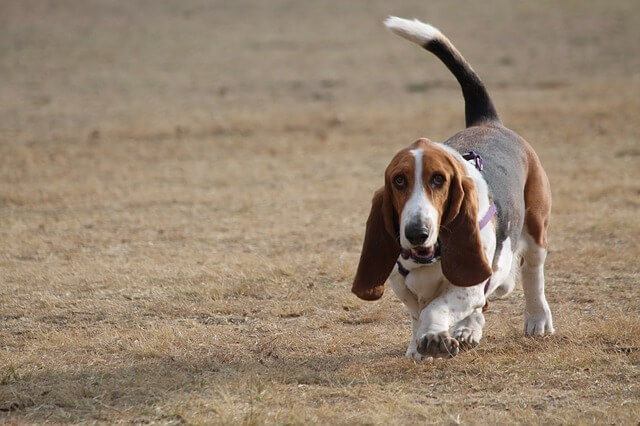
Just like the bloodhound, the basset-hound can effectively track and trail a smell in the air and for long distances. That wouldn’t be a surprise because the basset-hound has initially been bred to track scents.
This short-legged hunter easily gets carried away in the process and may not pay attention when asked to “heel.”
Asides being sometimes stubborn, the basset-hound is a loveable charmer whose main desire is to hunt and serve those he loves.
People think that cats are the best pets to keep rodents away. However, here is an unpopular truth – nothing can motivate cats to chase rats except they feel like doing it.
Consequently, certain breeds were developed to fight against rat menace. They will readily chase after anything that resembles a rat.
Below is the list of the most efficient rat hunters.
What is the best dog to get for pig hunting ???
In as much as our mandate is education about purebred dogs, we occasionally post information that may or may not be about an actual “breed,” per se, and we tend to let our readers decide.
In the course of research about hog dogs, we came across the Bull Arab, a dog developed in Australia around 1972 by Mike Hodgens to track, chase and deal with wild boars by pulling them to the ground and holding them by the ear until hunters arrive. These dogs have an acute sense of smell and can locate feral pigs that are nearly 4 miles away. In fact, excellent tracking abilities have made Bull Arabs useful for Search and Rescue work. When one sees the breeds that went into its development, it makes sense.
Originally, Bull Arabs were 50% Bull Terrier, 25% Greyhound for speed, sight and athleticism, and 25% German Shorthaired Pointer for scenting, intelligence and silence while hunting. Some believe that the English Pointer was used instead of the German Shorthaired Pointer, as well as the Saluki (which accounts for the name, ” Arab”) instead of Greyhound. A later line called the Paulsen Bull Arab after its creator, Peter Paulsen, included nearly 13% Bloodhound to add stamina and tracking ability.
Its said that Hodgens stopped breeding Bull Arabs in 1981, and all other dogs in 1989. He evidently went through difficulties to create the Bull Arab, but we didn’t come across information as to what those difficulties were.
Bull Arabs are described as loyal and even-tempered dogs who are friendly with familiar adults and children, but they are working dogs with a high prey drive who are designed for an active lifestyle; they are dominant and potentially aggressive hunters, and as such, Bull Arabs should only be taken on by positively assertive and experienced owners.
It’s important to note that while the breed has a reputation for aggression, there is a little hard data to support the charge. A source we found cited that reports supplied by 80 New South Wales councils and passed on to the Department of Local Government between 1 July 2005 and 30 October 2006 detailed several attacks attributed to Bull Arabs, but the same report also show many other breeds with a greater number of attacks.
In terms of popularity, the Bull Arab is established as the number one Pig Hunting breed in Australia, and there is an effort in that country to get these dogs recognized as a registered breed. The same organization behind that movement wants to protect owners who want authentic Bull Arabs, and not poorly bred dogs. To that end, the group is pushing for DNA testing as a sole method of verification. Critics say that DNA testing is not sufficient, however, and will create too many variables. Time will tell if the Bull Arab will move to official recognition, and our sense is that it has a long way to go. For now, we wanted you to know about the Bull Arab – also known as the Australian Pig Dog – even if it’s almost never seen outside of Australia.